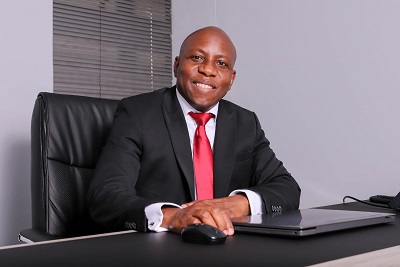

MD: Genesis Corporate Solutions
The majority of the companies that turnaround professionals deal with are not the major corporates, but it is in the smaller and medium sized companies that are run by entrepreneurs who have learned a few tricks of the trade that have helped grow their business in a growth market. Very few of these entrepreneurs have any formalised business training. Are we empowering success?
However, Covid-19 and the growth of the Fourth Industrial Revolution have redefined the landscape. Entrepreneurs who have no formalised training can no longer hide behind their past experience. They need to ask some serious questions about goals and strategies that will help sustain their business.
The 2023 Deloitte Restructuring Survey points out that Statistics South Africa pointed out that there was increased liquidations in 2022. Without overanalysing the reason for the increase in liquidations, the StatsSA report highlights small and medium enterprise (SME) market data. These companies typically sink faster and deeper into distress after living month-to-month, leaving little to no room on the balance sheet to opt for any alternative other than liquidation. It is also safe to assume that many of these companies waited too long to act, making a reasonable prospect of rescue improbable and leaving them with liquidation as the only outcome. This needs to change, we need to empower smaller and medium sized companies for a successful future.
Clarifying goals: where do I want to go? Work towards success
The HBR article points out that an entrepreneur’s personal and business goals are inextricably linked. Whereas the manager of a public company has a fiduciary responsibility to maximize value for shareholders, entrepreneurs build their businesses to fulfill personal goals and, if necessary, seek investors with similar goals. We can then work towards success.
Before they can set goals for a business, entrepreneurs must be explicit about their personal goals. And they must periodically ask themselves if those goals have changed. Many entrepreneurs say that they are launching their businesses to achieve independence and control their destiny, but those goals are too vague. If they stop and think about it, most entrepreneurs can identify goals that are more specific. For example, they may want an outlet for artistic talent, a chance to experiment with new technology, a flexible lifestyle, the rush that comes from rapid growth, or the immortality of building an institution that embodies their deeply held values. Financially, some entrepreneurs are looking for quick profits, some want to generate a satisfactory cash flow, and others seek capital gains from building and selling a company. Some entrepreneurs who want to build sustainable institutions do not consider personal financial returns a high priority. They may refuse acquisition proposals regardless of the price or sell equity cheaply to employees to secure their loyalty to the institution.
Only when entrepreneurs can say what they want personally from their businesses does it make sense for them to ask the following three questions:
What kind of enterprise do I need to build? The article adds that long-term sustainability does not concern entrepreneurs looking for quick profits from in-and-out deals. Similarly, so-called lifestyle entrepreneurs, who are interested only in generating enough of a cash flow to maintain a certain way of life, do not need to build businesses that could survive without them. But sustainability—or the perception thereof—matters greatly to entrepreneurs who hope to sell their businesses eventually. Sustainability is even more important for entrepreneurs who want to build an institution that is capable of renewing itself through changing generations of technology, employees, and customers. The chances of success are then improved.

Image By; Canva
Entrepreneurs’ personal goals should also determine the target size of the businesses they launch. A lifestyle entrepreneur’s venture needn’t grow very large. In fact, a business that becomes too big might prevent the founder from enjoying life or remaining personally involved in all aspects of the work. In contrast, entrepreneurs seeking capital gains must build companies large enough to support an infrastructure that will not require their day-to-day intervention. Have you got success on the mind?
What risks and sacrifices does such an enterprise demand? Building a sustainable business—that is, one whose principal productive asset is not just the founder’s skills, contacts, and efforts—often entails making risky long-term bets. Unlike a solo consulting practice—which generates cash from the start—durable ventures, such as companies that produce branded consumer goods, need continued investment to build sustainable advantages. For instance, entrepreneurs may have to advertise to build a brand name. To pay for ad campaigns, they may have to reinvest profits, accept equity partners, or personally guarantee debt. To build depth in their organizations, entrepreneurs may have to trust inexperienced employees to make crucial decisions. Furthermore, many years may pass before any payoff materializes—if it materializes at all. Sustained risk-taking can be stressful. As one entrepreneur observes, “When you start, you just do it, like the Nike ad says. You are naive because you haven’t made your mistakes yet. Then you learn about all the things that can go wrong. And because your equity now has value, you feel you have a lot more to lose.”
Setting strategy: how will my success get me there?
The HBR article points out that many entrepreneurs start businesses to seize short-term opportunities without thinking about long-term strategy. Successful entrepreneurs, however, soon make the transition from a tactical to a strategic orientation so that they can begin to build crucial capabilities and resources and enable success.
Formulating a sound strategy is more basic to a young company than resolving hiring issues, designing control systems, setting reporting relationships, or defining the founder’s role. Ventures based on a good strategy can survive confusion and poor leadership, but sophisticated control systems and organizational structures cannot compensate for an unsound strategy. Entrepreneurs should periodically put their strategies to the following four tests:
Is the strategy well-defined? The article adds that a company’s strategy will fail all other tests if it doesn’t provide a clear direction for the enterprise. Even solo entrepreneurs can benefit from a defined strategy. For example, dealmakers who specialize in particular industries or types of transactions often have better access to potential deals than generalists do. Similarly, independent consultants can charge higher fees if they have a reputation for expertise in a particular area.
An entrepreneur who wants to build a sustainable company must formulate a bolder and more explicit strategy. The strategy should integrate the entrepreneur’s aspirations with specific long-term policies about the needs the company will serve, its geographic reach, its technological capabilities, and other strategic considerations. To help attract people and resources, the strategy must embody the entrepreneur’s vision of where the company is going instead of where it is. The strategy must also provide a framework for making the decisions and setting the policies that will take the company there.
The strategy articulated by the founders of Sun Microsystems, for instance, helped them make smart decisions as they developed the company. From the outset, they decided that Sun would forgo the niche-market strategy commonly used by Silicon Valley start-ups. Instead, they elected to compete with industry leaders IBM and Digital by building and marketing a general-purpose workstation. That strategy, recalls cofounder and former president Vinod Khosla, made Sun’s product-development choices obvious. “We wouldn’t develop any applications software,” he explains. This strategy also dictated that Sun assume the risk of building a direct sales force and providing its own field support—just like its much larger competitors. “The Moon or Bust was our motto,” Khosla says. The founders’ bold vision helped attract premier venture-capital firms and gave Sun extraordinary visibility within its industry.

To be useful, strategy statements should be concise and easily understood by key constituents such as employees, investors, and customers. They must also preclude activities and investments that, although they seem attractive, would deplete the company’s resources. A strategy that is so broadly stated that it permits a company to do anything is tantamount to no strategy at all. For instance, claiming to be in the leisure and entertainment business does not preclude a tent manufacturer from operating casinos or making films. Defining the venture as a high-performance outdoor-gear company provides a much more useful focus.
Can the strategy generate sufficient profits and growth? The HBR article points out that once entrepreneurs have formulated clear strategies, they must determine whether those strategies will allow the ventures to be profitable and to grow to a desirable size. The failure to earn satisfactory returns should prompt entrepreneurs to ask tough questions: What’s the source, if any, of our competitive edge? Are our offerings really better than our competitors’? If they are, does the premium we can charge justify the additional costs we incur, and can we move enough volume at higher prices to cover our fixed costs? If we are in a commodity business, are our costs lower than our competitors’? Disappointing growth should also raise concerns: Is the market large enough? Do diseconomies of scale make profitable growth impossible?
Executing the strategy: can I do it and achieve success?
The HBR article adds that the third question entrepreneurs must ask themselves may be the hardest to answer because it requires the most candid self-examination: Can I execute the strategy? Great ideas don’t guarantee great performance. Many young companies fail because the entrepreneur can’t execute the strategy; for instance, the venture may run out of cash, or the entrepreneur may be unable to generate sales or fill orders. Entrepreneurs must examine three areas—resources, organizational capabilities, and their personal roles—to evaluate their ability to carry out their strategies.

Image By: Canva
Do I have the right resources and relationships? The lack of talented employees is often the first obstacle to the successful implementation of a strategy. During the start-up phase, many ventures cannot attract top-notch employees, so the founders perform most of the crucial tasks themselves and recruit whomever they can to help out. After that initial period, entrepreneurs can and should be ambitious in seeking new talent, especially if they want their businesses to grow quickly. Entrepreneurs who hope that they can turn underqualified and inexperienced employees into star performers eventually reach the conclusion, along with Intuit founder Cook, that “you can’t coach height.” Moreover, after a venture establishes even a short track record, it can attract a much higher calibre of employee.
In determining how to upgrade the workforce, entrepreneurs must address many complex and sensitive issues: Should I recruit individuals for specific slots or, as is commonly the case in talent-starved organizations, should I create positions for promising candidates? Are the recruits going to manage or replace existing employees? How extensive should the replacements be? Should the replacement process be gradual or quick? Should I, with my personal attachment to the business, make termination decisions myself or should I bring in outsiders?
The article points out that a young venture needs more than internal resources. Entrepreneurs must also consider their customers and sources of capital. Ventures often start with the customers they can attract the most quickly, which may not be the customers the company eventually needs. Similarly, entrepreneurs who begin by bootstrapping, using money from friends and family or loans from local banks, must often find richer sources of capital to build sustainable businesses that embrace success.
Importance to South Africa
Why is this relevant within the business rescue and business turnaround profession? Companies that exit financial distress are often very different from the companies that became distressed in the first place. It is up to us, as turnaround professionals to help companies set new goals and strategies that will preserve jobs and return the company back to profitability.
South Africa’s economic future lies in the strength of a well run private business sector where entrepreneurship is not only a means to build an income to support a family, but to build a legacy.
Phahlani Mkhombo is the MD of Genesis Corporate Solutions and is a Senior Business Rescue Practitioner.




